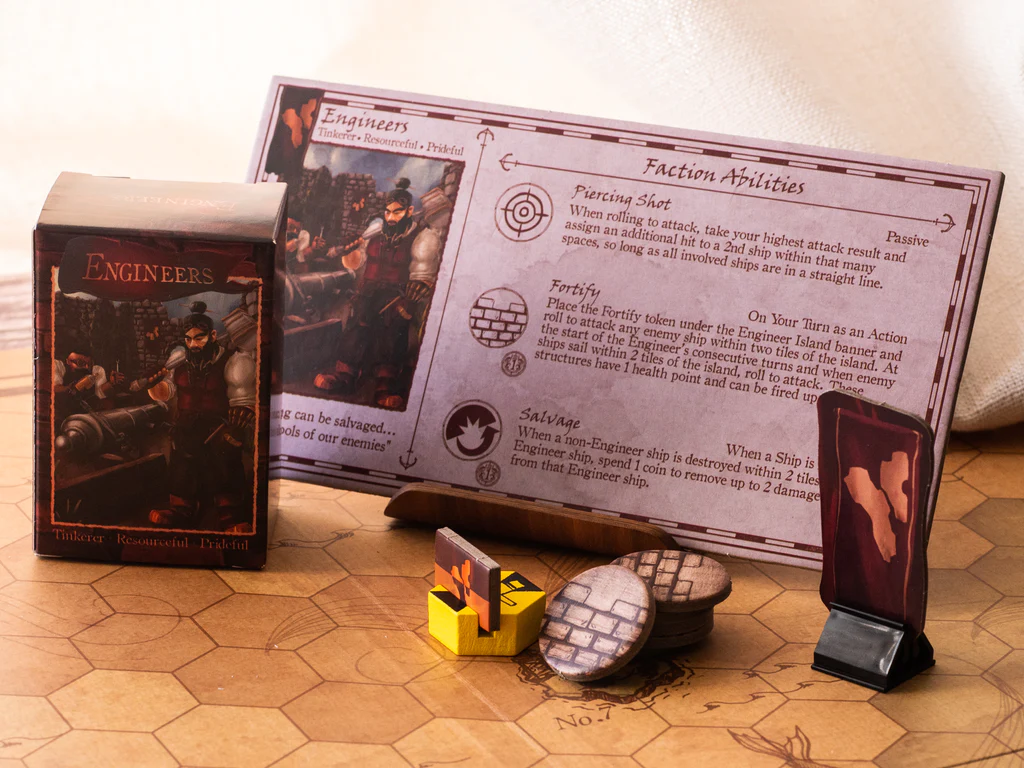Old Salt Board Game Review
I’ve never been much of a fan of tabletop war games, but when many of those mechanics are translated to a board game, it’s probably something I will be interested in. Old Salt isn’t the most flashy of board games (at least not without the Naval upgrade kit), but the core gameplay is well done providing a lot of choice, and giving you that feeling of playing a tabletop war game. After a few times on the table, how good is it? Let’s take a look!
You can watch our unboxing video for Old Salt below, or click this link if you want to read my thoughts on it!
Game Overview
While actually fairly simplistic to play, there is a descent amount of things going on in Old Salt, so please don’t treat this as a complete “How to Play” article. In Old Salt, players will manurer ships around a board, adding to their fleet and attempting to capture islands and enemy ships, in an effort to dominate the board. The game ends when one player either controls all the islands on the board, or is the only player with ships still on the board.
On their turn, players can move ships, attack enemies, or attempt to capture an island. Different ships provide different benefits, and where you attack an enemy ship will depend on the damage you can do. Some ships get free movement, some ships shoot farther, etc.
Having a well rounded fleet is key to success, which I quickly learned after one play. The game plays relatively quickly, and there is some variability with the trade winds tokens each round, which denotes an area of the board that may get extra movement (or nullify extra movement) for ships.
Component Quality
The designer of the game let me know when this arrived that there was an optional Naval upgrade kit which would improve many of the games components, and after I unboxed the game and played a few rounds, I wanted to email back and ask, “Why?” The game components are phenomenal in my opinion.
The wooden coloured ships look fantastic, with legible printing denoting the bow and stern. The cardboard flags for each faction nicely nestle into the ships, and easily come out – I was never worried about wrecking anything.
I also enjoy the rubber-like damage markers. Most games would come with cardboard damage tokens, but this slightly improved component makes playing the game just a bit more enjoyable. I’ve said it before and I’ll say it again – good components WILL make a game more desirable to play.
The board itself is pretty nondescript, but I think that was probably a design decision. It has that “old school” map feel that really fits this games theme. Everything on the board is very legible, which is pretty important.
The game also features a fantastic rulebook that not only outlines how to play, but provides examples when necessary. We had very few rules issues while playing, and when we did, common sense seemed to rule (although I’m sure there was probably something in the rulebook we just missed).
Finally, I love how the game stores in the box. Each faction in the game gets its own little tuck box that holds all the components required for that faction. This is a great way to get a game going quickly, as you only need to hand out boxes and then let each player setup their faction.
Gameplay – Was it Enjoyable?
When you first get Old Salt out of the box and onto the table, it can seem a bit daunting. There are quite a few pieces to sort out and put somewhere, but most of the tiles are faction specific. When you consider just what you need as supplies, it’s really manageable.
What I think the designers have done so well with this experience is the simplicity of the gameplay. Understanding what you can do on your turn is incredibly easy. Sail ships, attack ships, or attempt to capture islands.
There isn’t a ton more to it than that. But the strategy required to be really good at it is very deep. When do you attempt to capture an island? What ships should you have at your disposal when sailing the high seas? How can you maximize trade winds to get your ships as far as possible?
These are the questions I continually ask myself, and I do think that seasoned tabletop wargamers will have the advantage here. That being said, what I enjoy is how this game bridges the gap between traditional board games (my safe space) and tabletop war gaming (where my father-in-law excels).
It brings together different spaces of a similar hobby, and I think that is fantastic. If wargaming is your thing and you aren’t big into board games at all, this might be one to change your mind.

